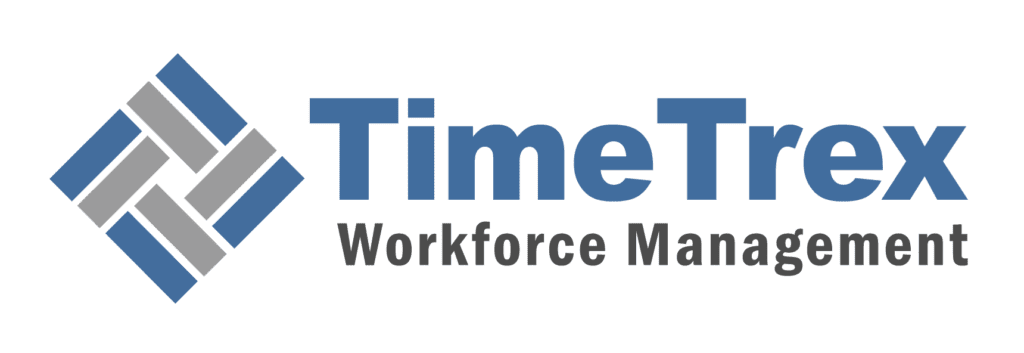Global Tech Sovereignty and the U.S. Semiconductor Chip War
The United States is leveraging aggressive US semiconductor tariffs to reshape the global technology landscape. This detailed analysis explores the impact of these US tariffs on semiconductors, for people concerned about the economy, national security, and the future of tech. We'll delve into the specifics of the new US chip war, the potential economic fallout from these semiconductor tariffs, and how this policy is forcing a global realignment of the vital semiconductor supply chain. Understanding these US tariffs on semiconductors is crucial for every American.
In This Article
TL;DR
The U.S. government is threatening massive tariffs, potentially 100% or higher, on imported semiconductors to force foreign manufacturers to build plants in America. This coercive policy is a major shift from the previous incentive-based CHIPS Act. Companies like Apple, TSMC, and Samsung, who are already investing in the U.S., are likely exempt. However, the policy risks significant economic consequences, including slower GDP growth, higher inflation, and increased prices for consumers on everything from cars to electronics. The move is accelerating a U.S.-China tech "decoupling," forcing other nations to build their own chip industries and fracturing the global supply chain. It's a high-stakes gamble that prioritizes domestic manufacturing over potentially broader economic stability and innovation.
The Tariff Mandate: Policy Architecture and Objectives
The United States government has initiated a series of aggressive tariff threats aimed at fundamentally reshaping the global semiconductor supply chain. This policy, centered on coercing foreign manufacturers to establish production facilities on American soil, marks a departure from previous incentive-based strategies and introduces a new era of uncertainty and strategic realignment for the technology sector worldwide.
The Evolving Tariff Threat: From Ambiguity to Coercion
The administration's semiconductor tariff policy has been unveiled not through a single, clear decree, but through a series of escalating and strategically ambiguous statements. This began with a staggering 100% tariff threat on imported semiconductors, later softened to a "fairly substantial tariff," yet complicated by mentions of rates as high as 200% or 300%. The scope is equally vague, potentially encompassing the "WHOLE ELECTRONICS SUPPLY CHAIN," including smartphones, laptops, and automotive components. This calculated ambiguity creates maximum uncertainty, pressuring global firms to announce domestic investments to mitigate potential damages before any formal levy is enacted.
The Investment Imperative: The Exemption as the Policy's Core
The central mechanism of this policy is not the tariff itself, but the condition for its avoidance: tariffs will not apply to companies that are "coming in, building, planning to come in" to the United States. This transforms the policy into a powerful tool of industrial coercion, dividing the industry into "winners" (like Apple, TSMC, Samsung) who have committed to U.S. investment, and potential "losers" (smaller firms or Chinese companies) who haven't. This establishes a multi-billion-dollar "price of admission" to the U.S. market, favoring large, capital-rich incumbents.
From Incentives to Coercion: A Paradigm Shift from the CHIPS Act
This tariff-driven strategy is a radical departure from the 2022 CHIPS and Science Act, which used over $52 billion in subsidies and tax credits to attract investment. The current administration views the CHIPS Act as an ineffective subsidy program and is instead replacing the "carrot" of financial incentives with the "stick" of punitive tariffs. This reflects a more confrontational relationship between the U.S. government and multinational tech firms.
| Policy Instrument | Proposed Rate | Scope of Goods | Conditions for Exemption | Legal Authority | Official Status | Key Companies Affected |
|---|---|---|---|---|---|---|
| Semiconductor Tariff | "Fairly substantial" to 100%, with threats up to 300% | Imported semiconductors, SME, and potentially downstream electronics | Active or planned investment in U.S.-based manufacturing facilities | Section 232 of the Trade Expansion Act of 1962 | Threatened; pending outcome of Section 232 investigation | Exempt: Apple, TSMC, Samsung, SK Hynix. Targeted: Firms without U.S. investment plans |
| Reciprocal Tariffs | Baseline of 10%; country-specific rates up to 50% | Most imported goods, with initial exemptions for semiconductors | Country-level trade balance negotiations | International Emergency Economic Powers Act (IEEPA) | Implemented; legality challenged and under appeal to the Supreme Court | Broad impact on all U.S. trading partners |
| China Section 301 Tariffs | Varies by product | Specific Chinese goods related to technology transfer and intellectual property | Product-specific exclusion process | Section 301 of the Trade Act of 1974 | In effect; USTR initiated a new investigation into China's semiconductor industry | Chinese semiconductor firms and related technology sectors |
The Legal and Administrative Battlefield
To implement its confrontational trade agenda, the administration is leveraging national security provisions to justify tariffs, aiming for a more durable legal foundation than broader authorities used for other trade actions.
Invoking National Security: The Section 232 Investigation
The legal cornerstone of the threatened semiconductor tariffs is a Section 232 investigation, initiated by the Commerce Department to determine the effects of semiconductor imports on U.S. national security. This frames chip sourcing as a matter of national defense. The investigation is exceptionally broad, covering the entire semiconductor value chain. Public statements suggest the administration views this not as an objective inquiry, but as the administrative process required to legally justify a policy decision that has already been made, with the probe intended to "lay the groundwork" for promised tariffs.
A Contested Authority: The Broader Legal War
The choice to use Section 232 is informed by legal battles over other tariffs imposed under the International Emergency Economic Powers Act (IEEPA). After an appeals court ruled these exceeded presidential authority, the administration is pivoting to the more legally resilient national security justification for its semiconductor agenda. This multi-pronged legal approach, which also includes a Section 301 investigation into China, is designed to ensure the policy can be implemented regardless of the Supreme Court's ultimate ruling on the IEEPA cases.
Economic Fallout: The Domestic Cost-Benefit Analysis
While the stated goal is to bolster U.S. security, the proposed tariffs carry significant potential costs for the domestic economy, key industrial sectors, and American consumers.
Macroeconomic Shockwaves: GDP, Inflation, and Household Income
Economic modeling projects that a 25% tariff on semiconductor imports would reduce U.S. GDP growth and lead to tangible losses for American households. One study suggests a cumulative loss of over $4,200 per person over a decade. Furthermore, the tariffs could create an inflationary shock, with the Yale Budget Lab projecting a 1.7% increase in the overall price level, equivalent to a $2,300 income loss per household in 2025. The policy could also result in a net loss to the U.S. Treasury, as lost tax revenues from slowed economic activity may exceed the tariff revenue collected.
Sectoral Stress Test: Automotive and High-End Electronics
The automotive industry faces an acute threat. A modern vehicle contains thousands of "legacy" chips, which are overwhelmingly made in Asia. A 100% tariff on these components would dramatically increase production costs, leading to higher car prices for consumers. The new U.S. fabs are focused on advanced chips, not the legacy chips automakers need, creating a "no-win" scenario. Similarly, the cost of high-end electronics, especially the servers and hardware powering AI and data centers, would increase substantially, making it more expensive to build out critical U.S. infrastructure.
The Reshoring Paradox: Costs, Capacity, and Contradictions
The policy's goal of reshoring manufacturing faces several challenges. The U.S. currently produces only a third of the chips it consumes, and building new fabs takes years. Even if manufacturing moves to the U.S., domestically produced chips will still be more expensive due to higher labor and construction costs. A critical contradiction lies in the fact that the Section 232 investigation also targets semiconductor manufacturing equipment (SME). Taxing the very tools needed to build new fabs would make the already expensive process of reshoring even more costly, as warned by the CEO of ASML, a key equipment supplier. Find out more at Brookings Institution.
The Global Chessboard: International Reactions and Strategic Repositioning
The U.S. tariff threat has triggered a cascade of reactions, accelerating geopolitical fragmentation and forcing strategic repositioning across the international semiconductor landscape.
U.S.-China Tech Decoupling Accelerates
China has responded defiantly, implementing retaliatory tariffs and restricting exports of critical raw materials like gallium and germanium. This "weaponization" of the supply chain is now a bilateral phenomenon. Concurrently, the U.S. has intensified its own blockade, revoking waivers that allowed U.S. equipment to be shipped to fabs in China. These actions are forcing a rapid technological decoupling, pushing the world toward a bipolar tech ecosystem with two distinct supply chains.
Taiwan's High-Stakes Balancing Act
Taiwan, home to the critical chipmaker TSMC, is in a precarious position. While publicly pledging to invest in the U.S., TSMC has privately warned the Commerce Department that tariffs could jeopardize the viability of its massive $165 billion investment in Arizona by reducing end-user demand. This reveals a sophisticated strategy of public compliance and private caution.
South Korea's Path of Compliance
South Korea has pursued a more direct strategy of compliance. Samsung and SK Hynix have leveraged their pre-emptive investments in Texas and Indiana to secure assurances from Washington that they will be exempt from the duties. This positions them to benefit from the policy and gain market share from less compliant competitors.
The Global Ripple Effect: Fragmentation and Sovereign Initiatives
In Southeast Asia, hubs for chip assembly and packaging like the Philippines and Malaysia have warned the tariffs would be "devastating" to their economies. This widespread instability is fueling a global trend toward geo-fragmentation, with the European Union and Japan accelerating their own "sovereign chip initiatives" to reduce their strategic vulnerabilities. For more details, see the analysis at China Leadership Monitor.
Strategic Outlook and Concluding Analysis
The U.S. shift toward a coercive tariff-based industrial policy for semiconductors is a high-stakes gamble with profound and lasting consequences for the global economy and geopolitical landscape.
The Fracturing of the Global Supply Chain
The most enduring consequence will be the accelerated fragmentation of the global semiconductor supply chain. The era of a single, optimized production network is being replaced by a system of more resilient but also more expensive and less efficient regional supply chains. This creates a new risk environment for corporations, with a valuation premium on firms with diversified, multi-region manufacturing footprints.
Efficacy and Unintended Consequences
While the policy may compel further U.S. investment announcements, it is unlikely to create a fully self-sufficient U.S. supply chain in the near term due to barriers like skilled labor shortages and high domestic costs. The most damaging outcome may be that by increasing the cost of a foundational technology, the tariffs risk making American innovation more expensive and less competitive, inadvertently handicapping the very industries the policy aims to support.
Final Assessment: A High-Risk, High-Stakes Gamble
The administration's strategy wagers that the economic pain of tariffs will be a more effective catalyst for industrial revival than a collaborative, subsidy-driven approach. It prioritizes the physical location of manufacturing over the economic health of the broader technology ecosystem. While the policy may alter the geographic footprint of the semiconductor industry, it will do so at a significant cost to U.S. consumers, key industries, and potentially the long-term innovative capacity of the American economy. The ultimate success will depend on whether the perceived national security benefits of a reshored supply chain outweigh these substantial economic and strategic costs.
Calculate Your Tariff Impact
Understand how these new semiconductor tariffs could impact your bottom line. Use our free, up-to-date calculator to estimate the potential costs for your business.
Use Our Free US Tariff CalculatorDisclaimer: The content provided on this webpage is for informational purposes only and is not intended to be a substitute for professional advice. While we strive to ensure the accuracy and timeliness of the information presented here, the details may change over time or vary in different jurisdictions. Therefore, we do not guarantee the completeness, reliability, or absolute accuracy of this information. The information on this page should not be used as a basis for making legal, financial, or any other key decisions. We strongly advise consulting with a qualified professional or expert in the relevant field for specific advice, guidance, or services. By using this webpage, you acknowledge that the information is offered “as is” and that we are not liable for any errors, omissions, or inaccuracies in the content, nor for any actions taken based on the information provided. We shall not be held liable for any direct, indirect, incidental, consequential, or punitive damages arising out of your access to, use of, or reliance on any content on this page.
About The Author

Roger Wood
With a Baccalaureate of Science and advanced studies in business, Roger has successfully managed businesses across five continents. His extensive global experience and strategic insights contribute significantly to the success of TimeTrex. His expertise and dedication ensure we deliver top-notch solutions to our clients around the world.
Time To Clock-In
Start your 30-day free trial!
Experience the Ultimate Workforce Solution and Revolutionize Your Business Today
- Eliminate Errors
- Simple & Easy To Use
- Real-time Reporting

Saving businesses time and money through better workforce management since 2003.
Copyright © 2025 TimeTrex. All Rights Reserved.
